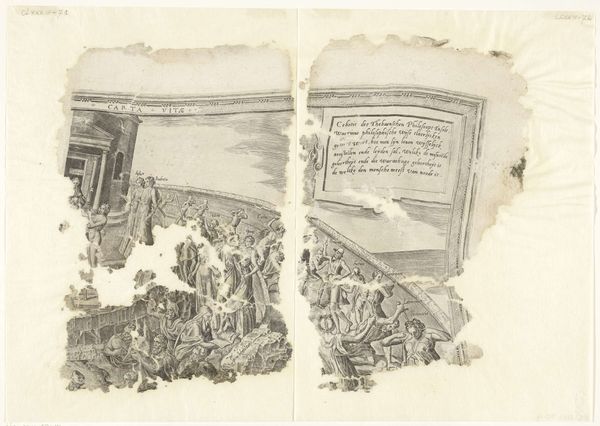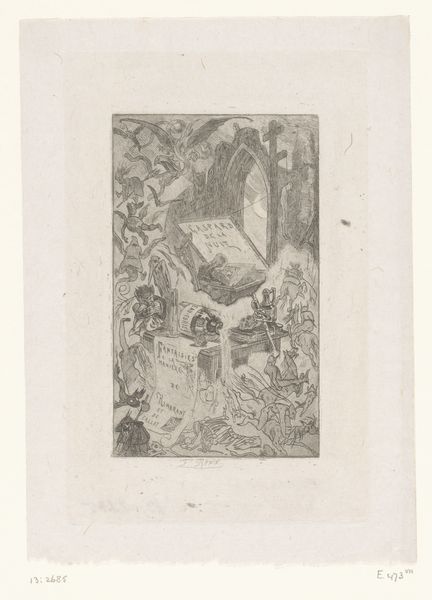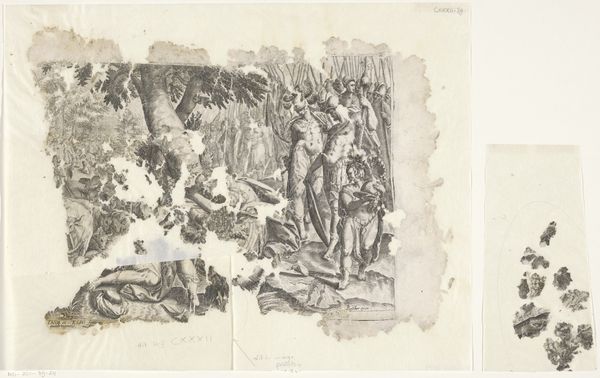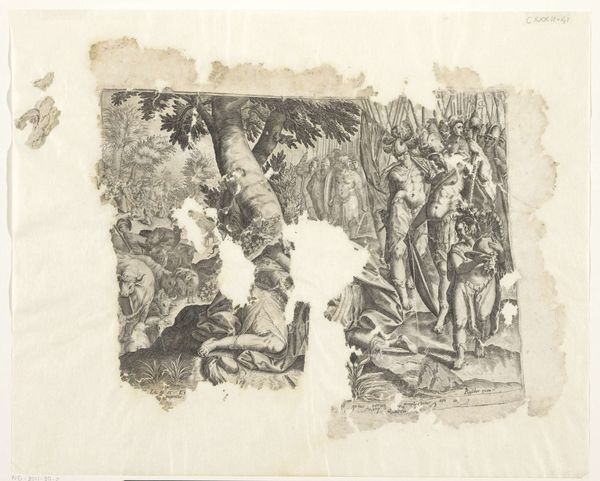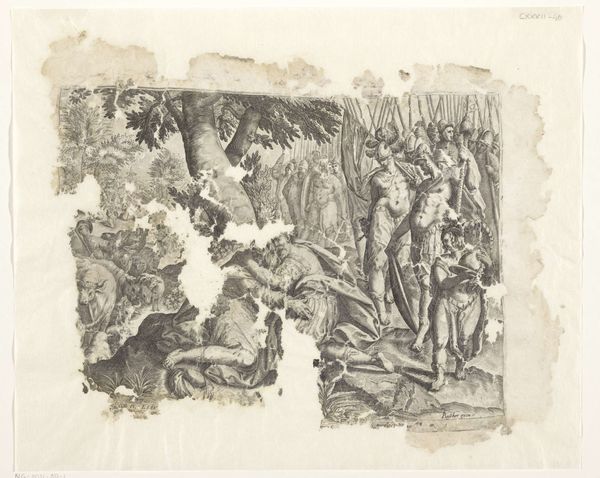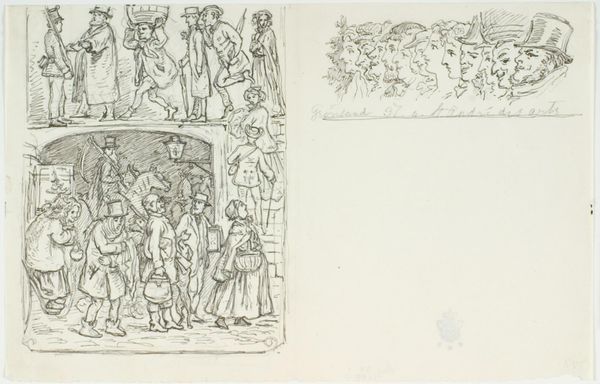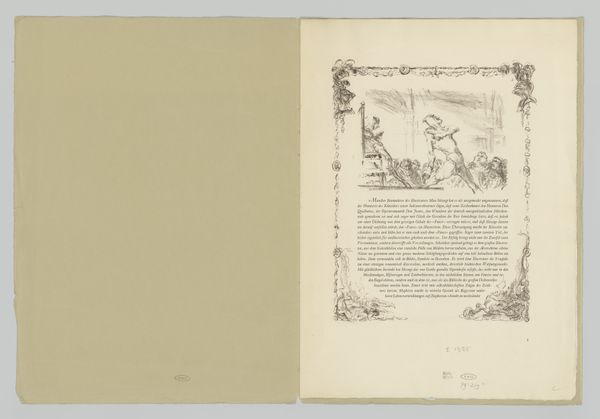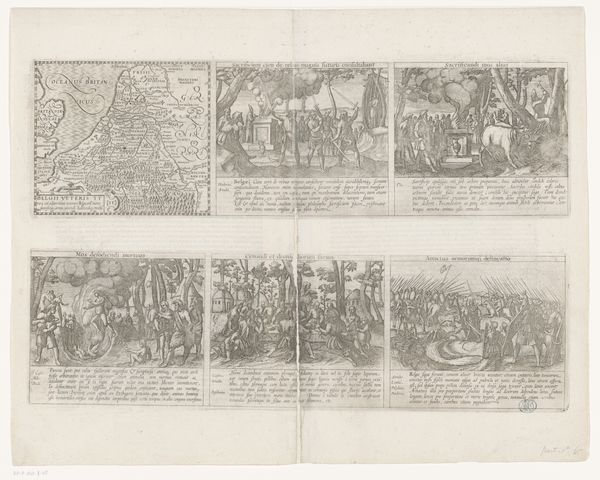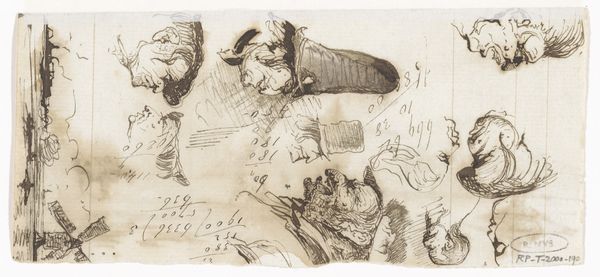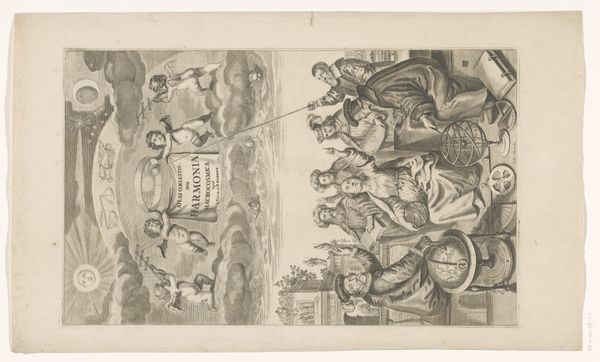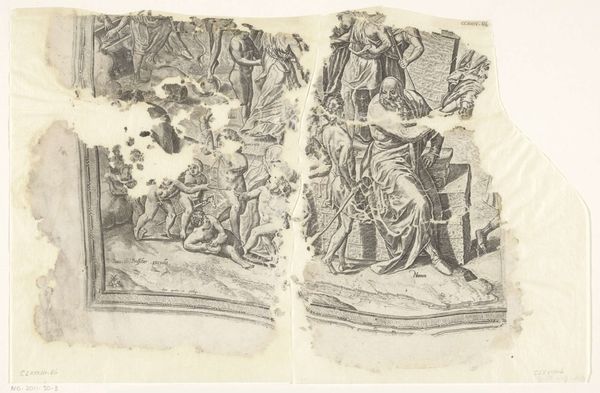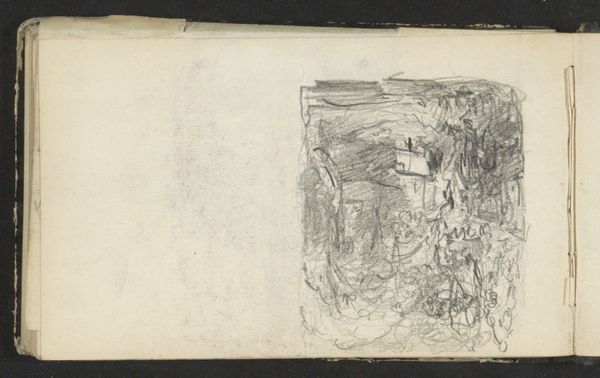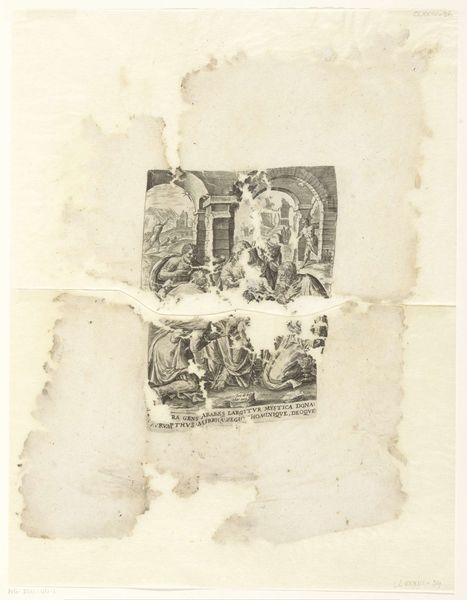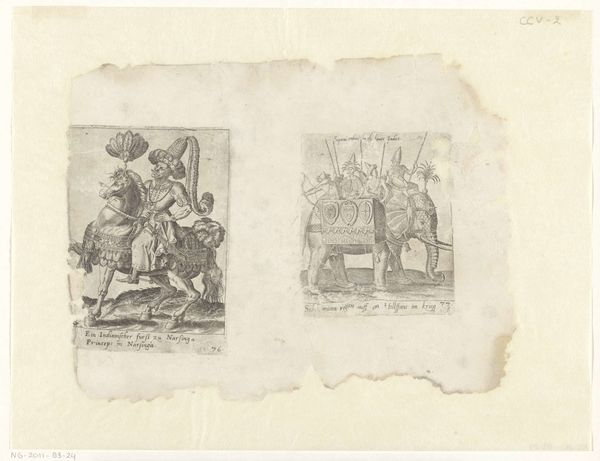
drawing, print, paper, ink, engraving
drawing
pen sketch
mannerism
figuration
paper
ink
line
history-painting
northern-renaissance
engraving
Dimensions: height 285 mm, width 397 mm
Copyright: Rijks Museum: Open Domain
Editor: So, this is a fragment of an engraving, "Linkerbovenhoek van een prent van het tafereel van Cebes" by Philips Galle, dating back to somewhere between 1561 and 1596. It’s a print on paper with ink, now at the Rijksmuseum. The damaged edges give it a strangely delicate feel, considering the detail in the figures. What strikes you most about this piece? Curator: What I find immediately interesting is the medium itself. Engravings were often mass-produced. Galle was not just an artist but a businessman, overseeing a workshop that churned out these images for a growing market. How does this mode of production affect our reading of the artwork's subject, this "Tafereel van Cebes" – a popular moral allegory? Editor: I see what you mean. It wasn’t a unique, precious object from the start, was it? More like...propaganda, almost? Do you think the choice of engraving as a medium cheapened the allegory’s message? Curator: Not necessarily 'cheapened', but disseminated it widely. Think about the labor involved – the engravers, the printers, the distributors. Galle profited, and a lot of hands shaped the final object and, therefore, its social impact. Are we looking at high art, or early mass media? Does the Northern Renaissance, with its burgeoning print culture, challenge that division? Editor: That’s a perspective shift for me! So, by examining the production and circulation, we're not just looking at art, but at 16th-century society. Curator: Exactly! The materials - paper, ink - the skilled labor of the workshop, and the network that brought this image to the eyes of many: this incomplete fragment gives clues about the making and meanings ascribed in its time, which resonate even today. Editor: It definitely does. Looking at art through the lens of its creation and distribution really opens it up. Curator: It contextualizes the art. Always.
Comments
No comments
Be the first to comment and join the conversation on the ultimate creative platform.
